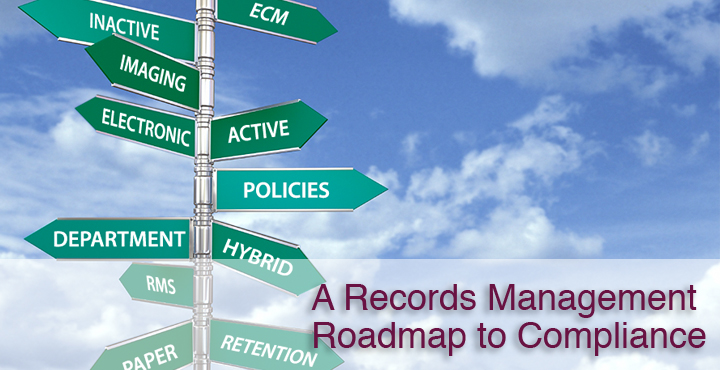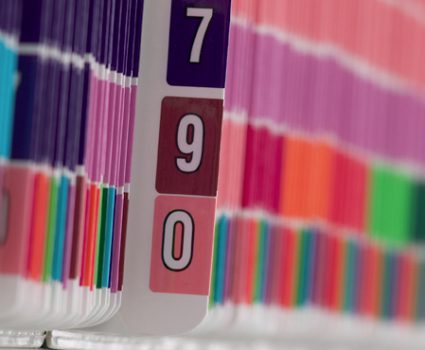
Getting to Compliance with Records Management: A Roadmap Series
How do you get to compliance? We’ve put together a roadmap series to show you the way.
Because the reality today is that government and the courts continually enact legislation and create laws which affect your company. Accordingly, you must be able to demonstrate due diligence and consistency of records management practices while ensuring the accuracy and security of the information held in your records.
The good news is that getting to compliance can also mean achieving your organization’s objectives! TAB’s Roadmap Series will help you get to an effectively designed records management program – an essential tool to not only enhance compliance, but also to increase customer satisfaction, improve access to information, and optimize real estate allocation for physical collections.
This week we will take a high level look at the roadmap, and in following weeks we will examine each element in detail.
Functional Classification
A records management program starts with the “what,” a common way of naming records known as a classification system. This is the “sign post” that clearly identifies information and facilitates filing, retrieval and archiving.
It is the classification system that provides the basis for compliance, risk management, retention periods, security safeguards and other related issues.
Retention Schedules
Once a classification system is in place, retention schedules must be assigned to every record within your environment.
The “why” of the roadmap, a retention schedule establishes how long an organization needs to keep its records as they progress through their organizational life cycle, including whether records are ultimately destroyed or archived.
Corporate Policies & Procedure Development
Here we outline the “who” by detailing the responsibilities of the user community as per the functional classification system and retention schedule.
We develop these policies and procedures to clearly establish what types of records are included in the program, who is responsible for various activities and who authorizes certain actions.
TAB SMART Program
This is a supervised exercise in which your organization’s employees are educated on all aspects of your records management program, and specifically as to what is a record vs. non-record material. This knowledge is then used to conduct an overall cleanup of the information within their areas, removing unnecessary materials, and moving records to the appropriate locations.
This exercise is a great way to ensure that you are only keeping essential information, thereby reducing what you are spending on storage and making your information more accessible.
Policy & Procedures for the End User
The “how to” component, this step determines the governing standard for managing your program. It also defines how to maintain the classification system and functionality of your program.
A detailed policies and procedures manual is perhaps the most important aspect of a records management program.
Implementation
This is the physical application of functional classification and retention schedules to the appropriate records throughout your organization.
In this step, the classification system and retention schedules are applied throughout your organization.





